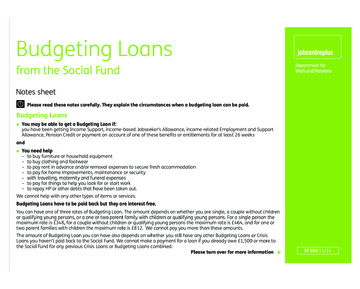
Some of the more common budgeting strategies include the envelope system, the zero-based budget and the 50/30/20 budget. There are many budgeting strategies, but it's important to find the one that's right for you.
Making a personal budget with loans how to#
Related: How To Create a Personal Budget in 6 Steps 4. Having realistic goals can also help you track your progress toward your goals, which can motivate you to stay on budget. Use your income and expenses to make a realistic estimate of how much money you can save each month or put toward debt.

For example, it can be easier to decrease your spending if your short-term goal is to reduce credit card debt. Identifying your goals can make it easier to follow your budget.

Long-term goals, such as saving for retirement or your child's college education, are goals that may take years to accomplish. Short-term goals, like saving for a vacation, might take a year or less. Make a list of both short- and long-term financial goals you want to accomplish. Related: How To Create a Budget Worksheet (With Template and Example) 3. You can divide these costs into monthly payments, which allows you to allocate a certain amount toward them with each paycheck. Check your credit card and bank statements and add in other expenses, such as taxes and insurance, which may bill annually, semi-annually or quarterly. Consider checking your bank or credit card statements for several months to get an average estimate of flexible expenses for each month.įinally, list your non-monthly expenses. Common examples of fixed expenses include mortgage or rent, car payments and student loan payments.Īfter you have listed these expenses, make a separate list of your flexible expenses, such as dining, entertainment, travel, groceries and other optional expenses that may vary from month to month. Make lists of your expensesīegin by listing all of your fixed expenses, which are costs that stay the same each month. Related: How To Make a Budget Plan in 6 Steps 2. That way, you can identify your average income per month. Create a document to track your monthly income after taxes for several months. It can be helpful to divide your net income into monthly amounts to prepare a more accurate budget. You might include income from your full-time job, freelance work and any other sources, such as investment dividends or rental payments from tenants. The first step in starting a budget is to determine your net income-or your pay after tax deductions.

Related: 8 Budgeting Methods To Help You Reach Your Financial Goals How to start a budgetįollow these seven steps to start a personal budget that can help you reach your financial goals: 1. To build up capital for a home or investment purchase To identify areas where you can reduce costs

Here are some reasons it's important to maintain a personal or family budget: Having a budget is vital for individuals and families who share income and expenses. In this article, we list some reasons why budgeting is important and explain how to start a personal budget in seven steps. If you want to meet your financial goals, learning how to create a budget can help you minimize spending and maximize your savings efforts. While budgets are vital for businesses, they can also be valuable tools for managing your personal finances. A budget is a record of how much money you're saving and how much money you're spending.


 0 kommentar(er)
0 kommentar(er)
